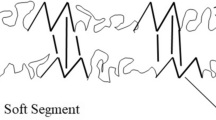Abstract
In order to compare the influence of the manufacturing methods on the property of silicone samples, the latticed structure of sample are designed, the silicone material is prepared and the silicone sample are produced by 3D printing and injection molding respectively. Four performance indexes of latticed silicone parts including the error of line width, the error of quality, tensile strength at break and elongation at break are proposed and measured. A fuzzy comprehensive evaluation system for evaluating the optimal forming method of the parts is provided. The performance indexes are used as evaluation factors, and the importance degree of the factors is determined according to the expert scoring method. The ranking index and evaluation matrix of the evaluation factors are determined by comparing and analyzing the measuring results, and the generalized fuzzy synthesis algorithm is used to evaluate the performance of sample. According to the assessment results, the comprehensive performance of the silicone sample produced by 3D printing is superior to that by injection molding.
Similar content being viewed by others
References
Hopmann C, Behmenburg C, Recht U, Zeuner K (2013) Injection molding of Superhydrophobic liquid silicone rubber surfaces. Silicone 6(1):35–43
Haberstroh E, Michaeli W, Henze E (2002) Simulation of the filling and curing phase in injection molding of liquid silicone rubber (LSR). J Reinf Plast Comp 21(5):461–471
du Plessis A, Yadroitsava I, Yadroitsev I, le Roux SG, Blaine DC (2018) Numerical comparison of lattice unit cell designs for medical implants by additive manufacturing. Virtual Phys Prototyp 13(4):266–281
Sing et al (2018) Selective laser melting of lattice structures: a statistical approach to manufacturability and mechanical behavior. Robot Comput Integr Manuf 49:170–180
Godoi FC, Prakash S, Bhandari BR (2016) 3D printing technologies applied for food design: status and prospects. J Food Eng 179:44–54
Nomura K-i, Kusaka Y, Ushijima H, Nagase K, Ikedo H, Mitsui R, Takahashi S, Nakajima S-i, Iwata S (2014) Continuous fine pattern formation by screen-offset printing using a silicone blanket. J Micromech Microeng 24(9):095021
Schumacher CM, Loepfe M, Fuhrer R, Grass RN, Stark WJ (2014) 3D printed lost-wax casted soft silicone monoblocks enable heart-inspired pumping by internal combustion. RSC Adv 4(31):16039–16042
Kitson PJ, Glatzel S, Chen W, Lin CG, Song YF, Cronin L (2016) 3D printing of versatile reactionware for chemical synthesis. Nat Protoc 11(5):920–936
Farzadi A, Waran V, Solati-Hashjin M, Rahman ZAA, Asadi M, Osman NAA (2015) Effect of layer printing delay on mechanical properties and dimensional accuracy of 3D printed porous prototypes in bone tissue engineering. Ceram Int 41(7):8320–8330
Fichou D, Morlock GE (2017) Open-source-based 3D printing of thin silicone layers in planar chromatography. Anal Chem 89(3):2116–2122
Melgoza EL, Vallicrosa G, Serenó L, Ciurana J, Rodríguez CA (2014) Rapid tooling using 3D printing system for manufacturing of customized tracheal stent. Rapid Prototyp J 20(1):2–12
Roh S, Parekh DP, Bharti B, Stoyanov SD, Velev OD (2017) 3D printing by multiphase silicone/water capillary inks. Adv Mater 29(30):1701554
Bar-Cohen Y, Vidal F, Reitelshöfer S, Göttler M, Schmidt P, Treffer P, Landgraf M, Franke J (2016) Aerosol-Jet-Printing silicone layers and electrodes for stacked dielectric elastomer actuators in one processing device. 9798:97981Y
O'Bryan CS, Bhattacharjee T, Hart S, Kabb CP, Schulze KD, Chilakala I, Sumerlin BS, Sawyer WG, Angelini TE (2017) Self-assembled micro-organogels for 3D printing silicone structures. Sci Adv 3(5):e1602800
Liu Y, Fang P, Bian D, Zhang H, Wang S (2014) Fuzzy comprehensive evaluation for the motion performance of autonomous underwater vehicles. Ocean Eng 88:568–577
Zuo R, Cheng Q, Agterberg FP (2009) Application of a hybrid method combining multilevel fuzzy comprehensive evaluation with asymmetric fuzzy relation analysis to mapping prospectivity. Ore Geol Rev 35(1):101–108
Sheng G-X, Rong D-W, Guo H-J, Yu Z, Zhou H (2008) Fuzzy comprehensive evaluation on the quality of different mixed feeds for fattening lambs by using in vitro method. Livest Sci 115(2–3):137–143
Guo L, Gao J, Yang J, Kang J (2009) Criticality evaluation of petrochemical equipment based on fuzzy comprehensive evaluation and a BP neural network. J Loss Prev Process Ind 22(4):469–476
Li J, Tarvainen T, Rich J, Turunen M, Paulasto-Kröckel M (2012) Hyperelastic property measurements of heat-cured silicone adhesives by cyclic uniaxial tensile test. J Electron Mater 41(9):2613–2620
Srivastava M, Rathee S (2018) Optimisation of FDM process parameters by Taguchi method for imparting customized properties to components. Virtual Phys Prototyp 13(3):203–210
Lee et al (2018) 3D bioprinting processes: a perspective on classification and terminology. Int J Bioprint 4(2):151
Acknowledgements
This work was supported by Department of Education of Liaoning Province of China (Grant No. JDL2017026).
Author information
Authors and Affiliations
Corresponding author
Additional information
Publisher’s Note
Springer Nature remains neutral with regard to jurisdictional claims in published maps and institutional affiliations.
Rights and permissions
About this article
Cite this article
Wu, L., Xu, L., Li, X. et al. Fuzzy Evaluation of Rapid Prototyping Methods for Latticed Silicone Pieces. Silicon 12, 1995–2004 (2020). https://doi.org/10.1007/s12633-019-00244-z
Received:
Accepted:
Published:
Issue Date:
DOI: https://doi.org/10.1007/s12633-019-00244-z




